Somerset floods crisis: How the story unfolded
- Published
Large parts of the Somerset Levels spent much of the winter of 2013-14 under water.
Villages were isolated, homes evacuated, the farming community in disarray and the bad weather relentless.
BBC News looks at how the area's flooding crisis unfolded.
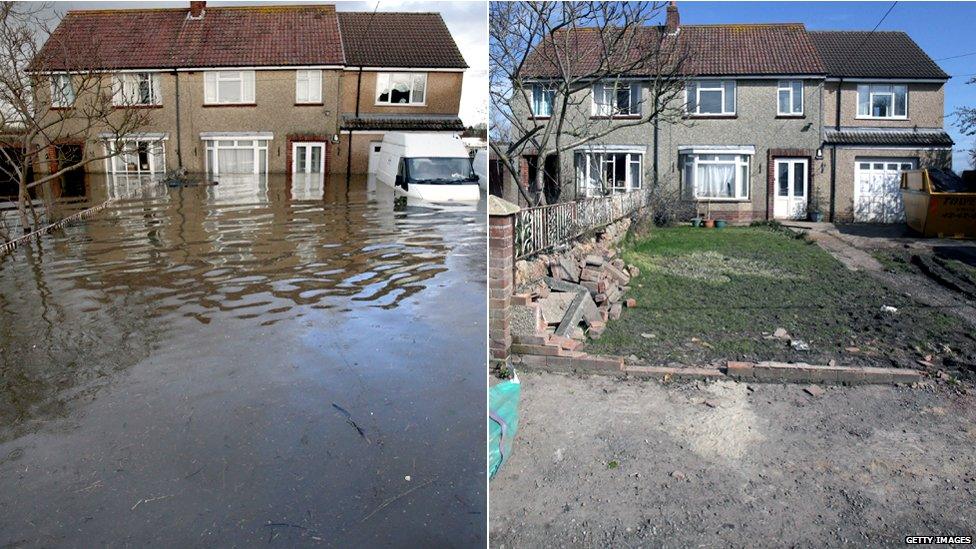

Not-so-happy Christmas (24-31 December)
South West England is battered by storms. High winds and heavy rain cause power outages, road closures and widespread travel disruption, with hundreds of weather-related emergencies, including motorists getting stuck in flood water.
The Environment Agency warns of flooding on the Somerset Levels and alarm bells ring for the Local Government Association which urges people to look online for details of emergency accommodation in case they are forced out of their homes by rising water levels.
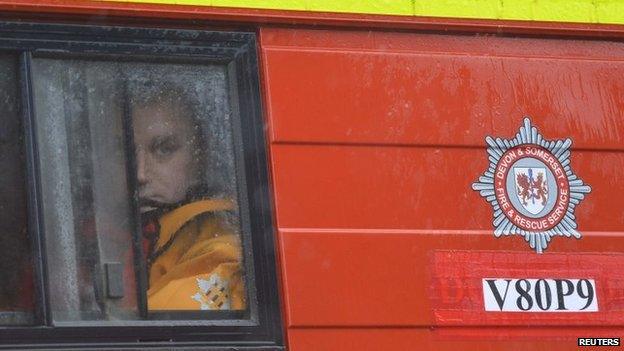
Rescue crews began the year by being called out to hundreds of weather-related emergencies

New year, same story (3-4 January)
It is not long before rising flood water triggers the first large-scale response, with the RSPCA leading a rescue of cattle and horses from a farm on the Somerset Levels.
Two boats, normally used by the fire service in Norfolk for river rescues, are also sent to Somerset as water cuts off all major roads into Yeovil and submerges thousands of acres of the Levels.
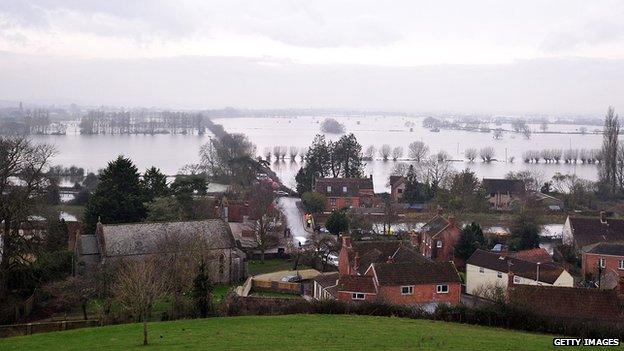
Before long thousands of acres of the Somerset Levels were submerged (Burrowbridge pictured)

Leaving home (6-7 January)
A fortnight after the storms began, residential properties are now being evacuated. Anne-Marie Simpson was rescued from her North Curry home via a window and into a boat. She said she was "keen to get away" after 13 days living off supplies.
"The scale of the flooding has taken us by surprise," she added.
Nine miles away in Muchelney, the BBC's Andrew Plant reports on residents using a canoe to make a mile-long paddle from their house to nearby Huish Episcopi, to pick up supplies. The village has been cut off since 3 January.
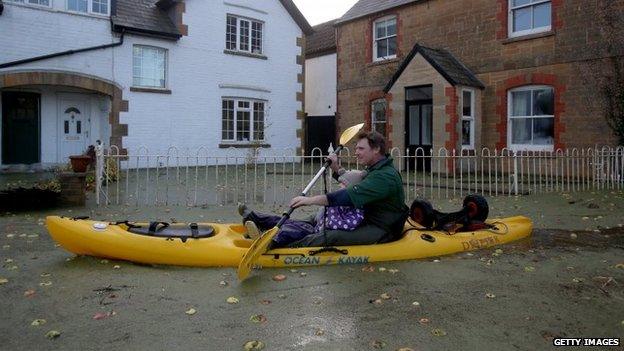
Muchelney was the first village to be completely cut-off by flood water

Crisis talks (15-22 January)
A "rallying call" is issued to the government during talks held between Defra Minister Dan Rogerson, the Environment Agency, local council representatives and voluntary groups.
Bridgwater MP Ian Liddell-Grainger joins the growing campaign, telling parliament the situation is "unacceptable" and accusing the Environment Agency of neglecting the rivers.
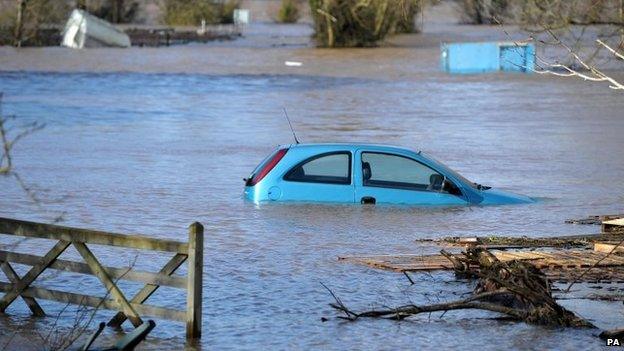
The Environment Agency has been blamed for neglecting the rivers

Major incident (24-25 January)
Concern locally peaks and a "major incident" is declared by two councils - Somerset County and Sedgemoor District - in a bid to mobilise extra support. This includes a request to the armed forces to consider helping villagers who have been cut off.
Meanwhile, tonnes of equipment have been brought in by the Environment Agency, which says it is carrying out its "biggest pumping operation ever" on the Somerset Levels.
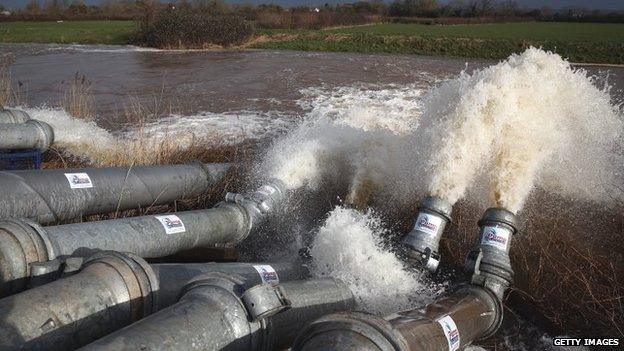
Efforts to pump water off the Levels and back into the rivers are under way around the clock

An inspector calls (27 January)
Flood water has covered parts of the Levels for a month when, during the government's first official visit to the area, Environment Secretary Owen Paterson is confronted by angry residents lambasting a failure to dredge the rivers.
The National Farmers Union also weighs in describing scenes of "utter despair", with farmers battling the significant cost of having 11,500 hectares (28,420 acres) inundated by about 65 million cubic metres of water.

Environment Secretary Owen Paterson was confronted by angry residents during his visit

Military mission (29-31 January)
A few days later and Mr Paterson offers military help and specialist amphibious vehicles to help affected areas. However, the initial offer is refused with Somerset County Council saying the fire service is currently meeting all needs. The military remains on stand-by.
Meanwhile, Prime Minister David Cameron announces rivers in Somerset will be dredged once all flood water has drained off the Levels and river banks are safe.
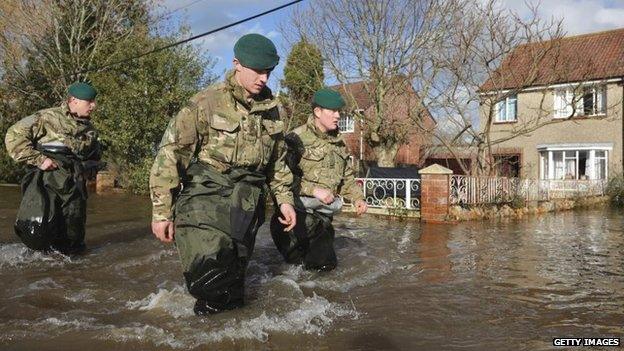
Military help was offered on 29 January and welcomed on 7 February (pictured)

A royal show (4 February)
Royalty arrives. The Prince of Wales is escorted through the floods by boat, and tractor and trailer, to meet residents and farmers around Muchelney.
It is a "tragedy", he says, that nothing has happened for so long and he "feels very sorry" for those affected.
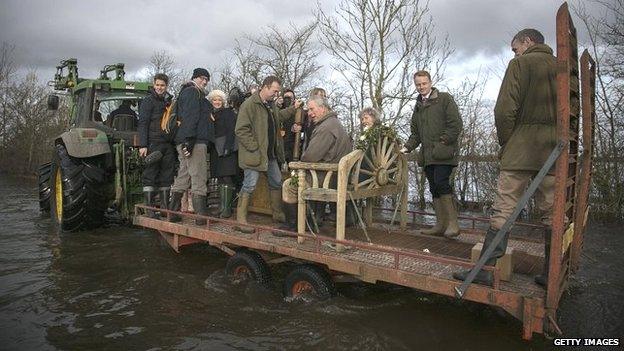
The Prince of Wales was taken through the flood waters by boat and tractor trailer

Warnings intensify (5-6 February)
The picture is getting worse. Two severe flood warnings are issued for parts of the Somerset Levels, signifying a danger to life, around East Lyng, Burrowbridge, Saltmoor and North Moor. Residents of Fordgate, North Moor and Moorland are advised to evacuate with the council estimating up to 150 properties could be affected.
A call is made to the military, and a number of Royal Marines from 40 Commando are deployed to help reinforce flood defences in Burrowbridge.
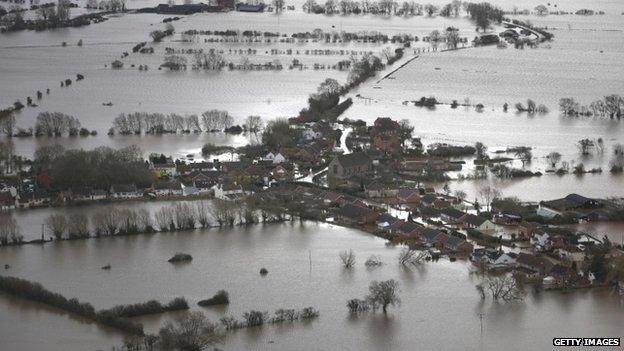
Moorland is virtually deserted other than a handful of residents who have chosen to stay at home

Political punches (7-9 February)
Latest flood visitors include the Prime Minister and Environment Agency chairman. David Cameron again states that everything possible would be done, but Lord Smith is the target of residents' calls to resign for "letting everyone down".
The spotlight turns back to Moorland where, in the middle of the night, rescue crews knock on doors urging villagers to evacuate saying temporary flood defences had been breached.
Back in London and Communities Secretary Eric Pickles says the government "made a mistake" by not dredging and may have relied too much on Environment Agency advice. The Environment Secretary is unhappy with this complaining "in the strongest possible terms" to the prime minister who has to step in and urge unity.
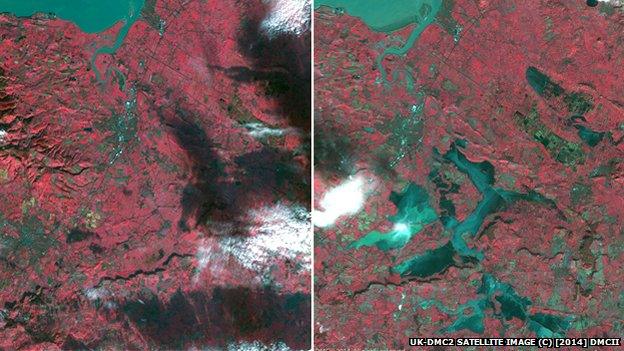
UK Space Agency images show how the flooding worsened from 8 January (left) to 10 February (right)
Pump up the volume (13-16 Feb)
In an attempt to get more water moving, and more quickly, the Environment Agency imports 13 high-capacity pumps from the Netherlands.
It is hoped they will clear 7.3 million tonnes of water each day from the levels, however after just three days they are turned off because of damage caused to the bank of the River Parrett by the volume of water being discharged.
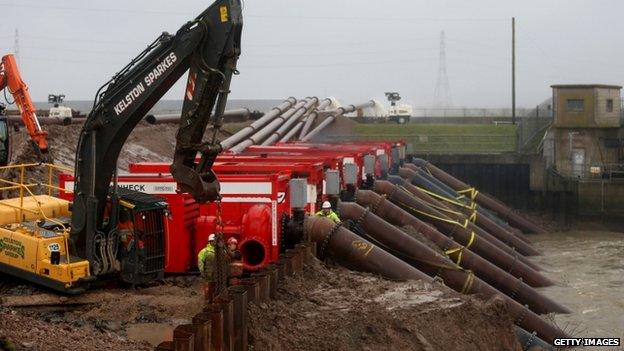
Eight high-capacity Dutch pumps are installed at Dunball
Talk of the recovery (20-21 Feb)
Is the water finally beginning to go down? The Environment Agency is planning for a recovery and says dredging on "key stretches" of the rivers Tone and Parrett could begin next month.
On the downside though, experts have said it could take up to two years before the farmland fully recovers from the flooding.
According to agronomists, the standing water is making the ground toxic.
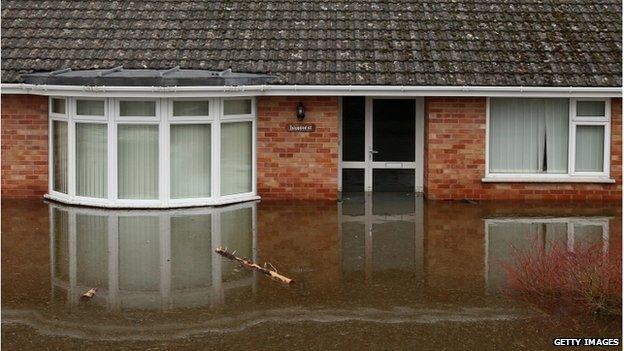
It could take up to two years for the farmland around the levels to fully recover
The 20-year plan (5-6 March)
Dredging, a tidal barrage and more permanent pumping sites are included in the 20-year draft plan which could cost £100m.
Prime Minster David Cameron has said "money is no object" but only time will tell.
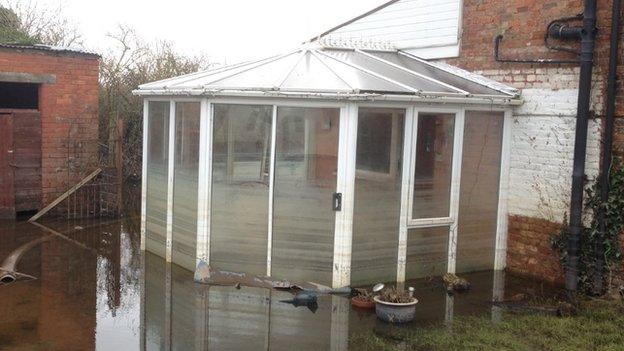
A 20-year plan to protect the levels from a repeat flood crisis has been presented to the government
Drying highways (13-14 March)
After almost three months, the water level has receded and the A361 between East Lyng and Burrowbridge has reopened to all traffic.
That meant Hubert Zajaczkowski, a 21-year-old apprentice at AgustaWestland in Yeovil, was able to reclaim his ruined car which he abandoned in floodwater on Christmas Eve.
The submerged vehicle became one of the most familiar sights during the coverage of the flooding.

The A361 was closed for almost three months due to flooding